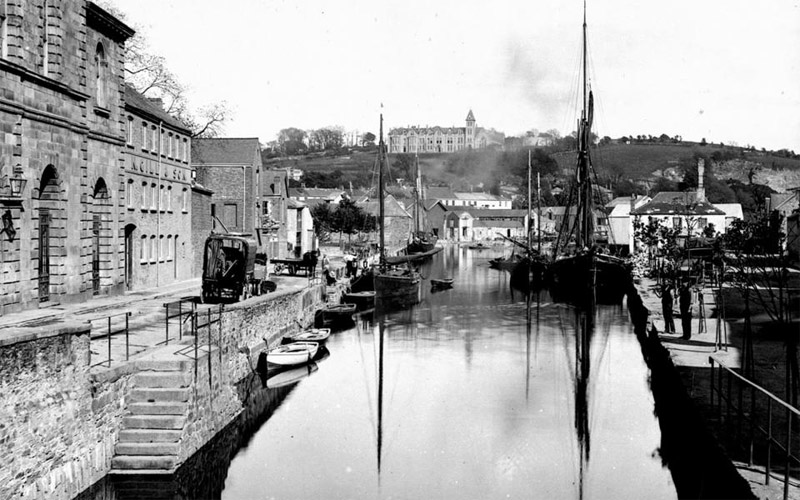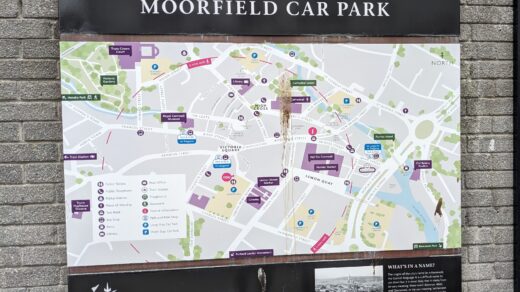Number One Priority is Sewerage

Chairman’s Report – September 2012
The new application for Tolgarrick Farm – upon which the Society needs to make a submission – includes correspondence between South West Water and the applicant. This follows from a lack of provisions in the draft s106 Agreement upon which the Langarth consent rests. The Tolgarrick note explains that there is capacity for 500 dwellings on the Newham Sewage Treatment Works – to be allocated on a ‘first-com-first-served’ basis. Apart from fuelling a ‘klondike’ mentality this assertion contradicts the verbal statement made to me in a meeting six months or so ago by Executive Directors of SWW that Newham is at capacity and in need of remedial works.
The Langarth (draft) s106 states that the matter of adequate sewage provision, either in terms of conveyance or treatment, does not concern the Council or the Planning Authority, and that arrangements can be made to ensure that all 1500 dwellings proposed in the Langarth application can be accommodated at Newham.
It is noteworthy that, from April 2013, Cornwall Council will host the Office of the Director of Public Health in Cornwall.
The topography of the Langarth sewage arrangement is dominated by long-flat pipe-runs interlaced with steep slopes, as you expect of moorland (Threemilestone) meeting an estuary (Truro). The first 500 houses (now which 500 is that??!!) at Langarth will be built at the bottom of a steep slope, requiring sewage to be pumped a significant distance up to the main sewer which runs from Threemilestone to the top of Dobbs Lane (by ALDI!).
We have learned from Treffry Road (319 dwellings) that pumps and sumps, being machinery, are susceptible to failure, to engineering calculation and to human intervention – anti-septic chemical treatment, maintenance, eventual replacement). We also know from the now lengthy history of human affairs that humans are unpredictably fallible, unlike gravity – which is monotonously predictable and unfailing – what goes up must come down. Newton, had he been a planner, would undoubtedly have ensured that Newtown had sewers reliant on gravity conducting their noxious, infective loads from ‘Up’ to ‘Down’ – why? Because the Director of Public Health wants sewage disposed of quickly, cleanly and infallibly!
Having pumped the Langarth sewage up to the main it will then travel along a reasonable decline to Dobbs Lane, where it will plunge quickly down Bosvigo Cliff to St George’s Road. Residents of St George’s Road are often reminded that they live pretty much at sea level when, at spring tides which coincide with heavy rainfall, their gardens are invaded by sewage leaking from manholes into their gardens. This has gone-on for years and is now pretty well managed, but it occurs. Being at sea level places St George’s Road on the level with the Newham Sewage Treatment Works, about one mile away.
That plunging sewer-load will arrive into a pipe with virtually no decline whatsoever – the rate of flow makes a slug feel like Juan Manuel Fangio or Lewis Hamilton. So, gathered in a sump, moved by pump, sped through Highertown past the Hospital to crash into an inert sewer at Bosvigo Bridge and to sit for however long it takes for sewage to flow that soiled mile to the end of Newham – under the river bed, through a pump house next door (or thereabouts!) to Skinner’s Brewery. Sewage is not inert, it is waste matter, and experiences chemical change. As those changes occur, until it is treated and rendered inert, it is infectiously dangerous.
Why did those Executive Directors tell me that Newham is ‘at capacity’? I don’t know, but they were not trying to deceive me! We were discussing the possibility of a partnership between Cornwall Council (waste disposal authority) and SWW to develop an anaerobic digester capable of treating both food waste (which Truro generates in skads) and sewage sludge (which we also produce in large amounts) and deriving heat and power from the process which could help to improve competitiveness of businesses or to ease the cost burden for vulnerable and disadvantaged neighbourhood. The conversation has not got any further but the fact remains – assertions of spare capacity are being made commercially (more houses generates more water rates!) whilst I am being told that works are required to meet the present demand!
Meanwhile, the Planning Authority is now allowing itself to be marginalised from this vital issue by failing to include any legally binding obligation on developers to ensure that, in a publically accountable and health-conscious way, the sanitation, health and wellbeing of existing communities is safeguarded, and that infrastructure is able to accommodate extra pressure occasioned by new development. I consider the lack of any such obligation in the Langarth s106 (draft) Agreement to be negligent – so negligent, indeed, as to be putting the welfare of residents and the resilience of the local economy at grave risk, both actually and in terms of Truro’s reputation and brand.
It is one thing, as at Treffry, to have Conditions which are not met, and quite another to have no conditions at all. SWW is a private company that exacts a portion of profit from every pound sterling levied, paid in fees or charged for services. It is also a Statutory Undertaker, and it has legal obligations to existing communities to be open, candid and to ensure that sanitation and health risks are properly and thoroughly managed so that the environment is conducive to good health, an effective society and good trade – these are values upon which Truro’s future rests. They are why so many older people choose to make their lives in our town centre, it’s why businesses wish to be seen to be associated with Truro, and it is why we prosper. If the price of speculative property development is a heightened risk, and perception of risk, to the well-being of the town, then we must beware and demand that Planners make policy, impose cast-iron Conditions and obligations, monitor and enforce.
Risks are there to be managed, but not to be ignored. At the moment various bits of correspondence and legal agreements leave much room for doubt – doubt that will be damaging to social morale and economic sustainability.
There are other matters to raise but I have dwelt on this matter at length because, at this moment, with SWW omitting to indicate if it needs a site allocated in the Neighbourhood Plan for a second treatment works, talks stalled on a ground-breaking partnership to address the overall waste burden through anaerobic digestion, and Truro overrun by a Klondike of speculators trying to get their hands on that (possibly) spare 500 dwellings before somebody has to spend real money (which should have been spent by Mr Tucker Brown years ago!) I consider sewage to be Truro’s number one priority.
I have written to Mr Loughlin, CEO of South West Water (and member of Cornwall LEP Board), seeking an urgent meeting.
Best wishes
Bert Biscoe
Chairman, Truro Civic Society.








2014: water in the fal now so infected that the fisheries are to be shut down. At low tide in Mylor harbour, sewage collects below the pontoons and water is boiling with gases being liberated from the mud below the wall adjacent to the oyster boats. Was Mr Biscoe listened to? Is Truro safe? Where does the rest of the sewage go?